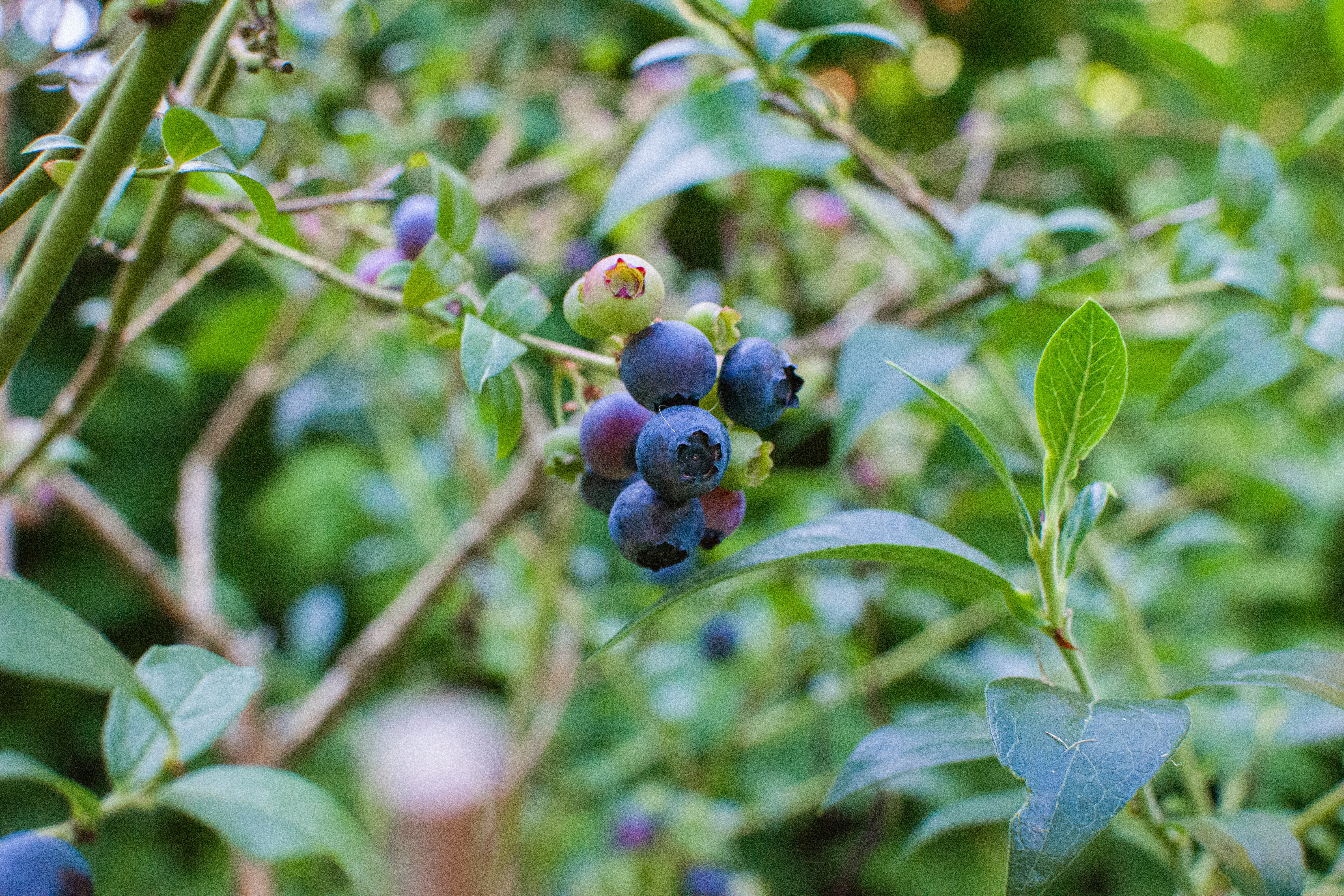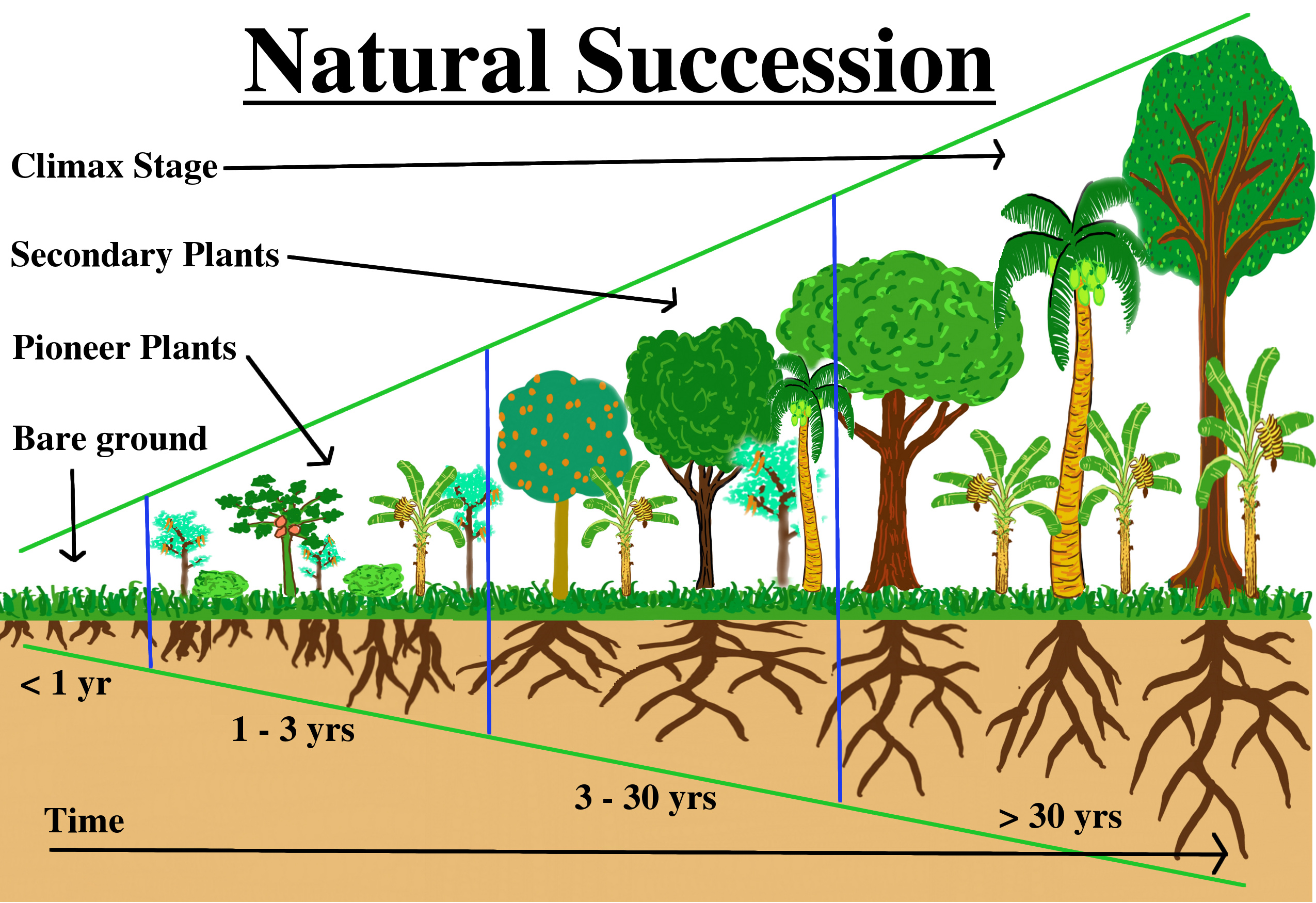Syntropic Agriculture – The Agricultural Turnaround From The Roots

It's a bit like playing God: Processes that might naturally take 1,000 years or more can now be brought about in a few years or decades during ongoing farming operations. We are talking about the restoration of natural ecosystems by human hands. The method is called Syntropic Agriculture or Agroforestry – from the ancient Greek "syn" for together and "trepein" for turn. Read this article to find out how the self-determined agricultural turnaround works, what the advantages and disadvantages are, and which resources support testing and conversion.
What is syntropic agriculture?
A particularly intensive form of agroforestry that mimics the establishment of an optimal natural ecosystem like that of natural virgin forests. Various crops and native plants are planted in high density. It is important to know the basics of plant sociology, soil biology, and supporting factors such as mycorrhizae and other biostimulants like humic substances.
With or without livestock!
While classical agroforestry is often combined with livestock, on the one hand to make multiple uses of the land, and on the other hand for direct fertilization and tillage by the animals, syntropic agriculture is based purely on the smallest possible cycles of the cultivated land itself. Integrating livestock is possible but not necessary.
This means that on a regular basis trees and shrubs are pruned, grasses are mowed and crop residues are used. Altogether, this serves as mulch and organic fertilizer, prevents soil loss from heat, wind or heavy rain, increases microbial activity, regulates weeds and constantly returns nutrients to the soil. Permanent root penetration causes the soil to store more and more CO2 and creates an airy crumb structure in the soil that maximizes water-holding capacity.
Who discovered it?
The system was developed, or rather observed, by Ernst Götsch, a farmer from Switzerland who has now lived in Brazil for 40 years and applies the system there just as successfully – with the plants native to the country. "The basis is the idea that areas recover through use. Life is syntropic by nature, and our agricultural systems should reflect its multi-layered characteristics," he says.
Where it is applied?
The principle occurs naturally all over the world, but is being actively reintroduced into intensive agriculture worldwide through the work of Götsch, among others. In Costa Rica, New Mexico, Greece, Brazil, Portugal, Germany and, of course, in Switzerland, the consequences of conventional agriculture and mismanagement can be reversed with active humus build-up through syntropic agroforestry and, at the same time, large yields can be generated after only a few years. More and more syntropic farms are emerging – or are taking their first steps in this direction.
It overlaps in some parts with other areas of sustainable agriculture such as biointensive agriculture or market gardening, permaculture or agroforestry but goes further than these.
What are the advantages?
Consequently, if several mutually supportive crops are planted close together, more yield per hectare can be expected. In addition, the plants are much more robust, not only due to the better setting (more natural light, soil and water conditions), but they also offer fewer attack vectors for specialized pests. The continuous humus build-up ensures long-term fertility and contributes to climate stabilization through massive storage of CO2 in the soil. In the long term, syntropic farming is much less expensive than conventional or organic farming because no inputs are used, irrigation becomes unnecessary, and the system is largely self-sustaining. In addition, no large fleet of machinery is required.
What are the disadvantages?
The changeover is learning-intensive. Many problems are solved differently than usual, for example, pests are seen as markers for unfavorable growing conditions. An infestation is evaluated and treated directly at the root – the plant community is optimized, the soil strengthened, and tillage adapted. Quick help with plant protection inputs is not the norm.
Some syntropic farms look cluttered and familiar sights are missed. Those who value a neat look go the extra mile and lay down a chopped layer of mulch.
Initially, after implementing the agroforestry areas, a change beckons in both working practices and harvesting. Most farm machinery already on the farm does not work very well in syntropic agroforestry; this raises some questions.
A case for machinery co-ops
For this purpose, the company RhenusTEK from Switzerland has launched the first of eight permaculture land machines, which is particularly suitable for the establishment of agroforestry systems and narrow seedbeds for syntropic vegetable cultivation: the Tree Line Preparer. It uses 25 % of the energy and 50 % of the time compared to conventional machines. The lightweight mix of cultivator and tiller creates 80 cm wide, trough-shaped beds that are deeper in the middle than on the sides. At depth, the soil is only roughly aerated but on the surface it is very finely crumbled and prepared for planting.
Ernst Götsch has so far developed a series of eight machines for soil cultivation – for sowing, cutting, mulching and harvesting. "Peace Farming Technologies" is the name he has chosen for this series. Until these are ready, however, improvisation is still required for the introduction of syntropic farming on your own farm.
How does the conversion work?
Ernst Götsch has posted some talks online about his research on syntropic agroforestry systems and there are occasional live workshops – all the information is here.
If that's not enough, the Climate Farmers Community offers the opportunity to exchange ideas with other farmers who also want to take new strides. The best way to make the switch is with a mentor who is already successfully implementing syntropic farming in a similar climate zone.
Farmer Adam Kahane from New Zealand has put together a handy database to get you started. There you will find teachers, online courses, sample farms, plant community databases, online manuals to get started, drawings, videos and forums specializing in syntropic farming. Definitely worth a visit!

The 3 Pillars of syntropic agroforestry:
-
Complex plant communities: Pioneer plants and successional plant communities are selected based on successful native plant communities and matching, mutually supportive crop plants. In syntropic agriculture, an emphasis is placed on perennial crops that are less labor intensive and provide permanent soil rooting. However, annual crops are also an important component.
For example, tree strips can be hard wood and lumber, as well as nut and fruit trees of different heights. Perennial shrubs and perennials sit in between, and the ground is planted with annual fruits and vegetables. Once harvested, the next crop is planted – there is no fallow in that sense. The soil is never left uncovered – already at harvest all the remains of the crops are left, in one piece or chopped.
- Anthropogenic succession: Robust pioneer plants that can colonize deficient soils or even marginal sites are replaced after a while by increasingly demanding and higher-value cultivated plant or plant communities – as would also happen in natural succession, for example on a wasteland over hundreds of years. By actively building up humus and managing nutrient cycles, this succession can be accelerated to such an extent that biotopes can re-emerge on wasteland within a few years to decades.
- Pruning and growth stimuli: A major component in syntropic agriculture is biomass production for mulching which is way above average. Pruning of companion biomass plants, scrubs and grasses, and application of chaff and crop residues establish forest-like soil conditions even in narrow agroforestry strips and are an efficient way to stimulate soil life and humus accumulation. At the same time, growth impulses are triggered and released into the soil through the roots. Thus, not only the pruned plant is hormonally stimulated, but also the surrounding ones.
A real jack of all trades
We know the principle of anthropogenic succession from mixed forest reforestation, but in the case of syntropic agroforestry, the method pays off in a timely manner, rewarding the effort with stable crop ecosystems and diverse monetization. A single field can then yield timber, fiber, honey, nuts, ornamentals and flowers, fruits and vegetables – spread over up to four seasons. Long-term planning and artificial succession add more and better sources of income each year.
If animals are integrated into the system, meat, leather, wool, milk or eggs can be added. Since sparse forest strips or semi-open forests show the strongest growth, animal husbandry is easy to integrate in the inter-rows (alternating with grain cultivation), for example in a short rotation. The classic orchard meadow can also be used syntropically. Circular mini-biotopes around fruit trees can also be integrated into animal husbandry with a little brainpower.
Conclusion
It should be noted that while it is possible to practice syntropic farming on a very large scale, the method is still most worthwhile for small farms that currently farm under harsh conditions such as soil deficiencies or extreme climates. But even large farms like Götsch’s own farm of 1200 acres can grow syntropical. And when all eight of Götsch's agricultural machines are on the market, syntropy can take hold everywhere.
Until then, we are happy to be there with our humic products for anyone who wants to build up humus, protect the climate, save agrochemicals or simply harvest better crops in conventional, integrated, organic or sustainable agriculture.
What do you think about the system? Interesting or unrealistic?



Comments
No Comments